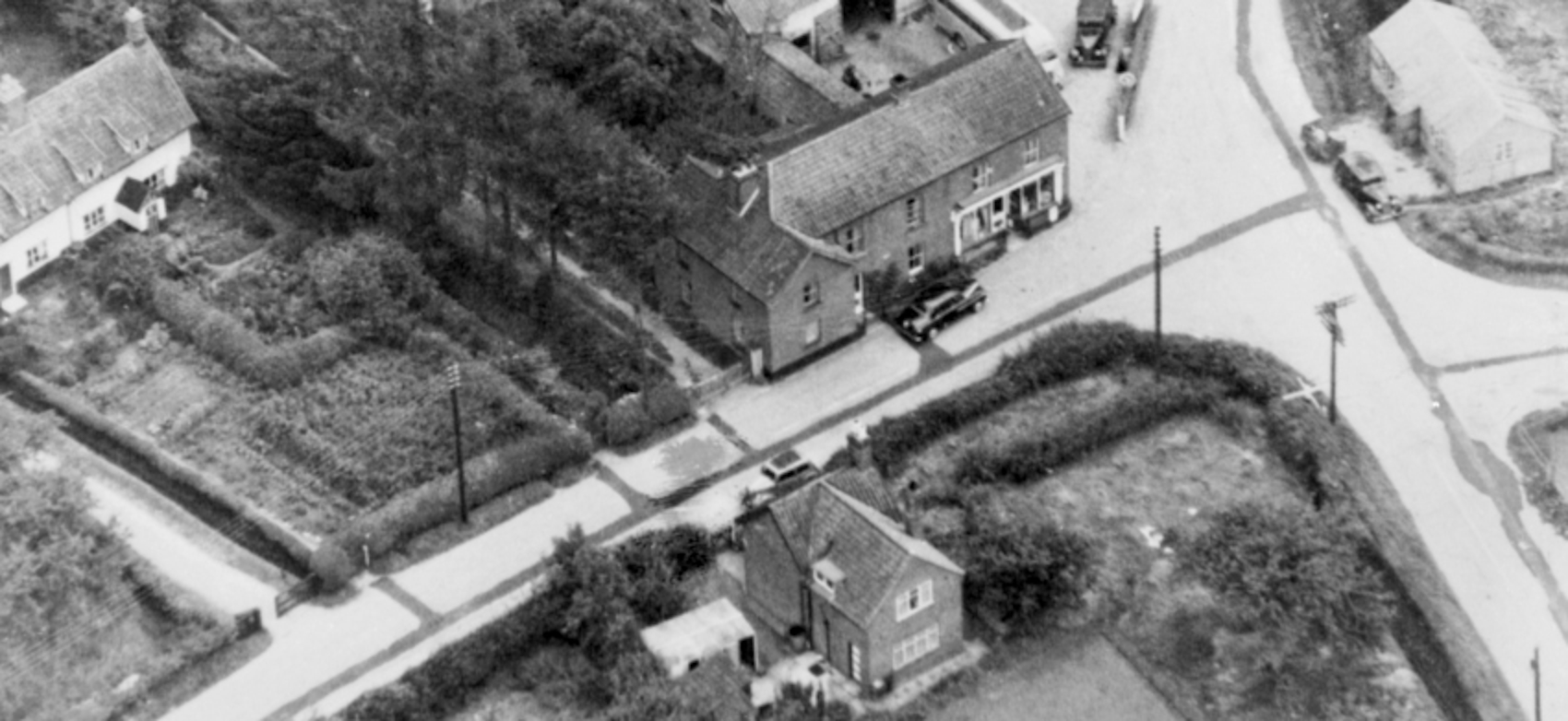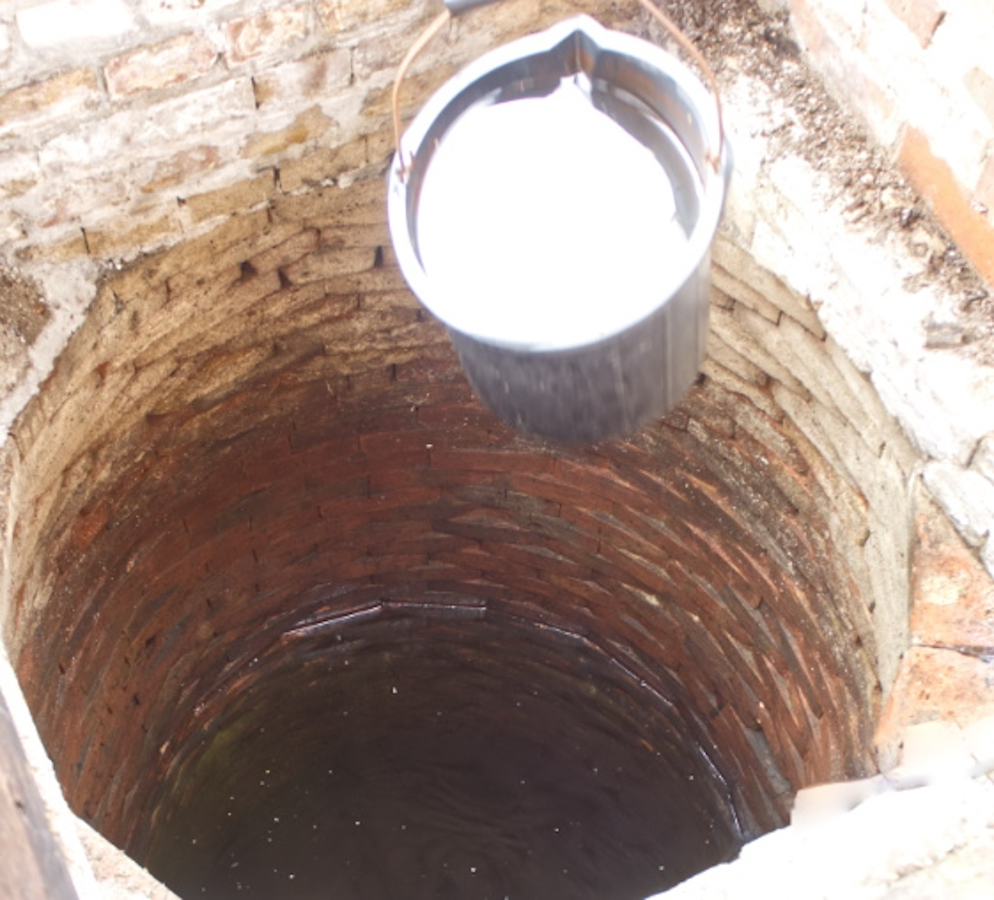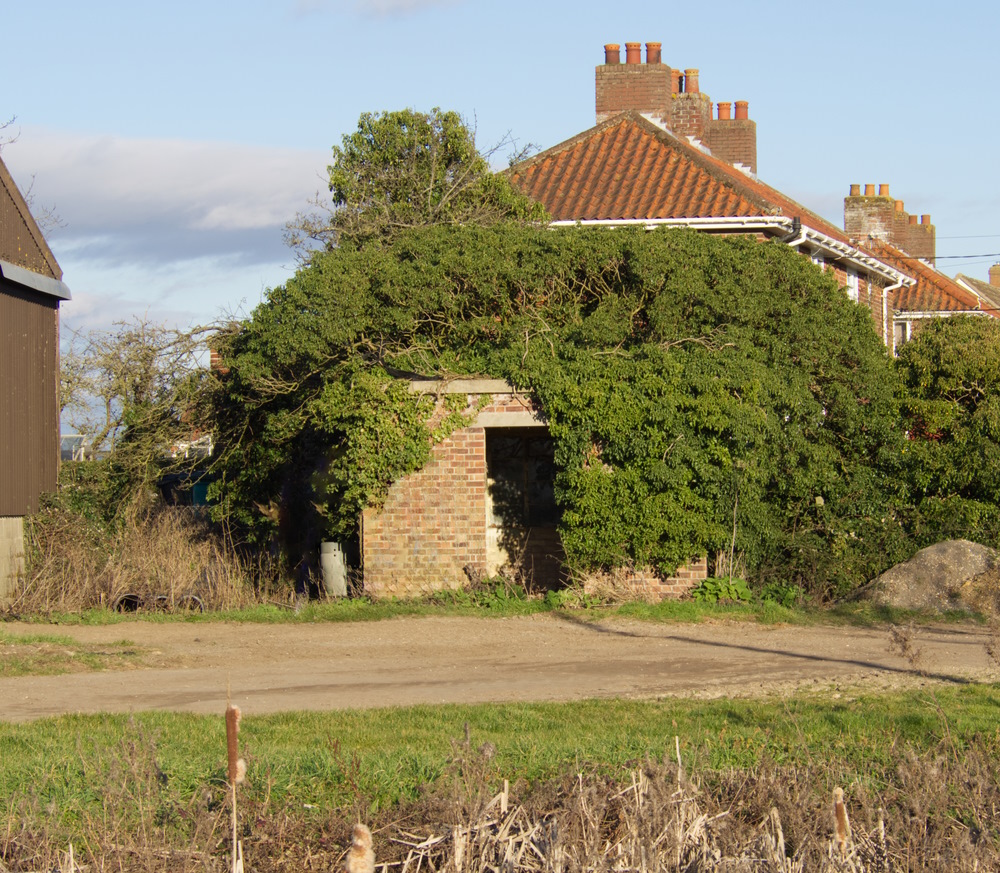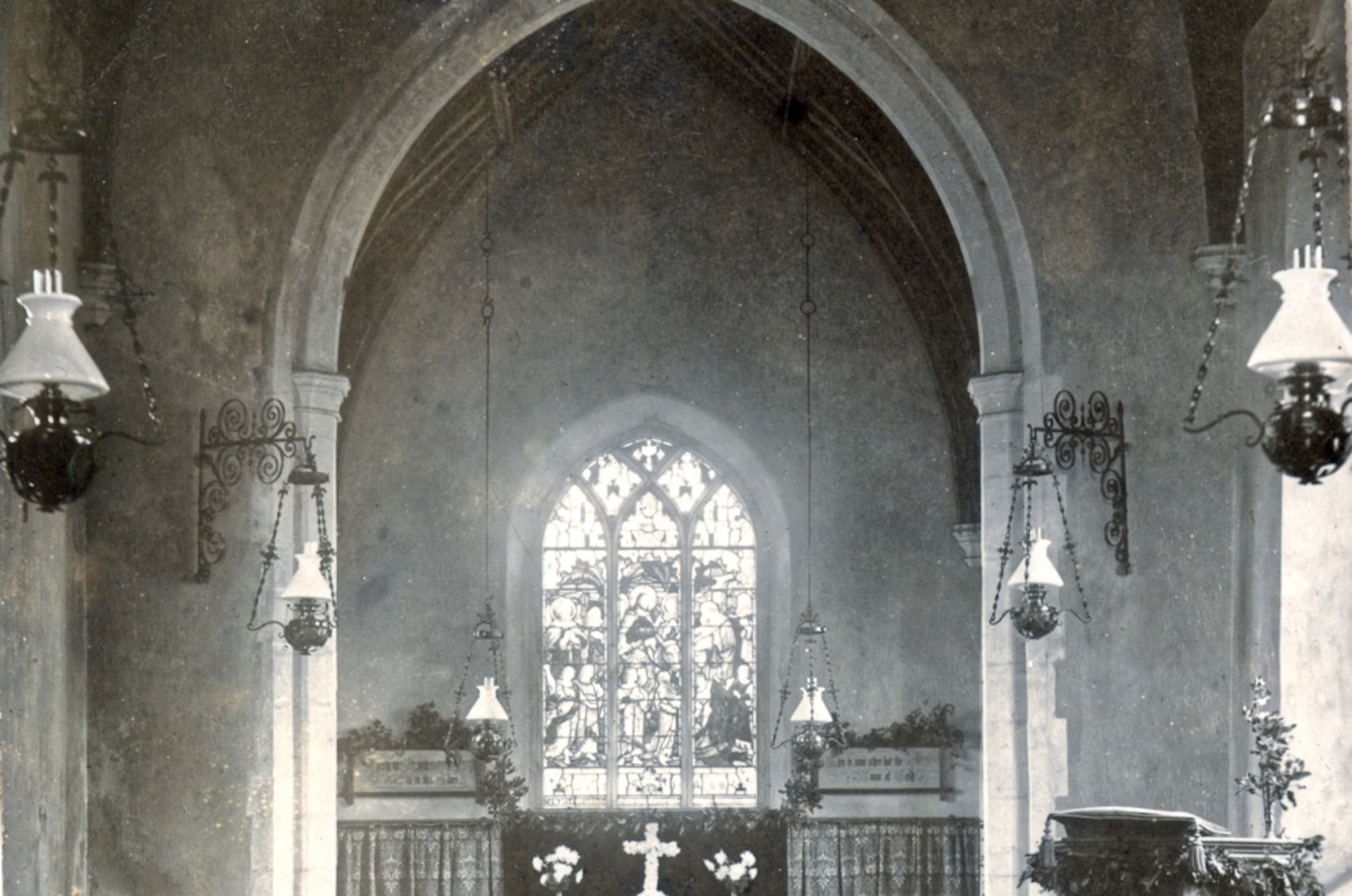
Water (and drains!)
Mains water arrived in about 1957. Life before that was totally dependent on wells – many of them shared.
Looking at the information in the 1918 Toprow auction gives an example of how many properties might depend on a single well – seven in that case. Some properties were lucky – where they only needed to share with a single neighbour, or even had their own.
The Rectory was a property with a dedicated well – in their case, right in the middle of the driveway.
It took another 50+ years before mains drainage turned up in Wreningham!

The process leading to Wreningham getting a mains water supply took many years.
On 24th November 1910, a House of Commons report entitled “Return as to Water Undertakings (England and Wales)” included the information that Wreningham’s water supply was based on wells which were “good and plentiful”.
However, by 1948, the Forehoe & Henstead Rural District Council’s annual Health and Sanitary Report was noting that prolonged dry weather had caused a deteriorating situation with the supply of well water. The wells were mostly shallow and the local water table had been falling. Emergency drinking water had been needed at 93 houses across 4 local villages, including Wreningham. The council stated that, even if the supplies were sufficient, the water was open to pollution and its quality was not to a desirable standard.
The 1948 report also included information that “30 converted hutments at Hethel Aerodrome and 43 at Ketteringham Camp [were already] supplied with piped water”. Circumstances had resulted in this temporary accommodation enjoying a superior service to that available to the permanent residents in the surrounding area.
By 1957, in Wreningham, the installation of an interim piped water supply was underway in the village. The water was initially sourced from a new council borehole drilled at Church Farm where “pumping plant” had also been installed. In addition to water mains buried in the roads radiating from the centre of the village, a water main was laid due south from Church Farm (across the fields) to reach the eastern end of Mill Lane.

It was powered by a 3 Phase electrical pump with its borehole below.
Decommissioned in the 1960s, the pump was eventually removed.
The district council’s 1958 report described the positive progress made in Wreningham: 5,000 yards of mains pipe had been laid with 80 consumers now connected; approximately half of Forehoe & District’s 8,000 residents now had pumped mains water supplies.
The longer term plan was to source the water from a connection to the Norwich Corporation water mains – but this would need to wait until new pipes had been constructed between Norwich and Bracon Ash. This final stage appears to have been completed in the early to mid 1960s.
In 2016, Anglian Water, who had become custodians of most of the region’s water infrastructure (including sewerage services), revisited Wreningham to reduce the growing levels of leakage from our (now) 57 year-old cast-iron water pipes. The work involved installing plastic linings within the original iron pipes and re-making the individual connections to new verge-side “stop-cocks” and meters. This upgrade was limited to our oldest mains water pipes – so most of Wymondham Road was left out, and the work was generally confined to the built-up areas of the village.
Prior to this, in 2010, Anglian Water constructed a £2m main drainage (sewerage) system across the built-up portion of Wreningham. A large proportion of Wreningham’s residents were suddenly able to free themselves from the use of sepic tanks, small treatment plants etc. It is a vacuum based system and the pumping house was constructed in Mill Lane. It contains one pump (plus provision for a second!) and the “output” is piped, through Toprow, towards Flordon.
Water and Electricity arrive in Wreningham
Electricity
In the early 1950s the modern electrical world was starting to arrive in Wreningham; on the village perimeters some of the farms may well have had some of earliest local connections to mains electrical power. Fir Grove signed up to theirs with the Eastern Electricity Board in July 1953. They were getting a three phase supply and advised they were expecting to draw a maximum of 20kVA of electrical power. A map from the period showed how they were being linked to a section of the grid which was already supplying the nearby Hethel Airfield.
Hill House Farm received a quotation for installing electric lighting in August 1951. Ten light fittings and two additional lighting sockets were being offered for “approximately £29” by the Eastern Elecricity Board – the only people authorised to carry out the work! Helpfully, the EEB also advised: “the existing mains service [being] installed is adequate for an additional 6kW cooker”.
As we have noted elsewhere, the original village hall was connected to the mains electricity supply in 1952. The hall no longer needed a tractor and dynamo to power its stage lighting.

In late 1958, the Revd John Gordon, Rector, agreed a faculty with the Norwich Diocese for the connection of electricity to provide electric lighting in Wreningham church. In the same faculty it was also agreed the church could sell its existing wrought iron lamp brackets. Had the wrought iron brackets once been a product of our village blacksmith?
Something not always appreciated by non-landowners is the “way-leave” agreement. This results in a utility company having to pay the landowner a regular fee after installing a permanent service which needs to cross their land. The earliest way-leave agreement payment we have seen was dated December 1930 and was marked “Wreningham Village LT Distribution”. This resulted in an annual payment to Hill Farm of 6 shillings. Landowners were unlikely to grow rich on the proceeds but it is always comforting for them to have something else on the income side of the ledger.
Telephones
Whilst rural telephone connections have been possible / available for a very long time, very few properties were connected when they first became available.
Just to the north of Wreningham, in Mulbarton, the rural telephone system came into existence in 1905. Their story is provided on this page of the Mulbarton History website (scroll down to near the end). In due course, several shared telephone lines (known as “party lines”) radiated outwards from Mulbarton. Apparently, by 1929, one of these had reached parts of Wreningham although we don’t have any information about the identity of its Wreningham subscriber(s). There may only have been one or two and this arrangement, for Wreningham, appears to have been quickly superseded by connections from the new exchange in Fundenhall.
The newly constructed (1929) Fundenhall exchange was “automatic”. Presumably this means it automatically routed a limited number of local telephone lines to a more distant manual exchange? This first Fundenhall exchange was small and constructed from brick. This building is now a garden shed and is several hundred yards further along Fundenhall’s Church Lane than the present, mostly wooden, exchange building. Both the old and new Fundenhall exchanges can be seen among these photos of exchanges (in the “Brooke” area) – here.
In those days, the national telephone system was part of the Post Office. Regularly updated directories provided lists of subscribers and their telephone numbers together with helpful information about the available services and how to use them. Most services required interaction with a telephone “operator” at the exchange. By the 1930s it was already possible to make international calls (to a limited list of countries) and it was also possible to use the telephone to dictate telegrams. The latter may well have been useful for getting urgent messages to distant individuals who could not (yet) be reached by phone!
From 1930, we can find Wreningham residents connected to the Fundenhall exchange listed in the telephone directory. For example, in 1930, farmer Dennis William Long at Fir Grove had been connected and given the number “Fundenhall 33”. In the 1931 directory he was joined by his son, Victor Dennis Long – living at The Bungalow in Hethel Road, on “Fundenhall 24”. By 1939, Victor Dennis Long had taken over Fir Grove from his late father. Conveniently, on relocating to the farm, Victor had also managed to swap phone numbers with The Bungalow whose re-allocated “33” number was now in the name of Minnie Long. The 1939 directory also shows their relation Burton Bullimore Long having had a phone line installed at High House Farm at High Common.
A cursory look through these 1930s directories has not highlighted other Wreningham residents with telephones. Perhaps we have not searched diligently enough – NB each of these old directories cover several counties and are typically over 1000 pages in length! In those days most people regarded telephones as unaffordable for purely “social” purposes. We might presume the pioneering Long family recognised the telephone as an important and time-saving business tool bringing benefits to their respective farming operations. Interestingly – and as far as we can see, none of the other farms in the village appear to have taken the same view.
Moving on nearly 20 years and the telephone directory for 1958 shows a modest increase in the number of Wreningham properties connected. Additions included: The Rectory and Spratts Grocers / Coach Hire. On the other hand, no 1958 telephone connections can be seen for Poplars Farm, Hill House Farm or the Bird in Hand. Of course, it was still early days – until, eventually, the copper telephone network became ubiquitous. Today there are complaints about the “slow” roll-out of direct fibre broadband; people forget (or never knew!) it took many tens of years of continuous investment and hard work to get the majority of the nation connected with “old fashioned land-line” telephones.
No technology stays still. “Land-line” telephone services are progressively becoming incorporated within broadband services. The subsequent stages of this process will progressively result in all voice services running exclusively along a fibre line to every property. By the early/mid 2030s it’s likely that these direct fibre lines will also route all “terrestrial” television services when television transmitters, such as our local TV mast at Tacolneston, are expected to be retired.
